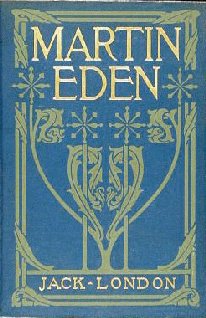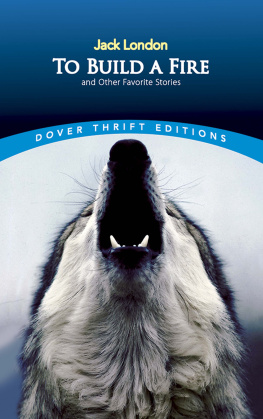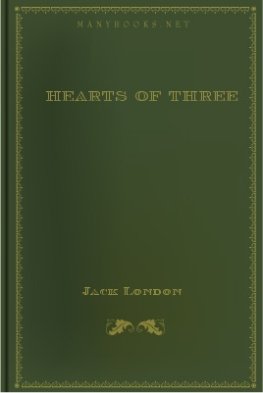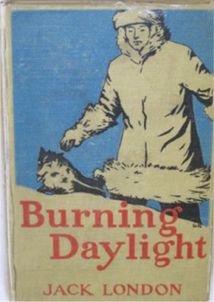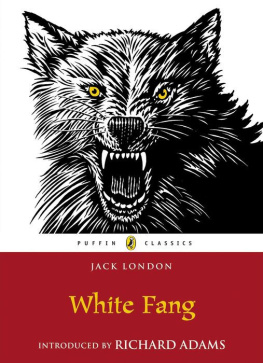
Jack London

DOVER PUBLICATIONS, INC.
Mineola, New York
DOVER THRIFT EDITIONS
G ENERAL E DITOR : M ARY C AROLYN W ALDREP
E DITOR OF T HIS V OLUME : J ANET B. K OPITO
Copyright
Copyright 2015 by Dover Publications, Inc.
All rights reserved.
Bibliographical Note
Jack London: The Dover Reader, first published by Dover Publications, Inc., in 2015, is a new compilation of novels and short fiction by Jack London reprinted from standard editions.
Library of Congress Cataloging-in-Publication Data
London, Jack, 18761916.
[Novels. Selections]
Jack London: the Dover reader / Jack London.
p. cm. (Dover thrift editions)
eISBN 13: 978-0-486-80072-1
I. London, Jack, 1876-1916. Call of the wild. II. London, Jack, 1876-1916. White Fang. III. London, Jack, 1876-1916. Sea-wolf. IV. Title.
PS3523.O46A6 2015
813'.52dc23
2014033868
Manufactured in the United States by Courier Corporation
79116501 2015
www.doverpublications.com
Note
J ACK LONDON was born in San Francisco in 1876. As a youth, he worked on the waterfront while attending school. He indulged his imagination by reading travel and adventure talesa literary education that provided both an inspiration and a foundation for his own writing, which spanned novels, essays, short stories, and autobiographies. He eventually took to the sea on his seventeenth birthday, signing up for the seal-hunting schooner Sophie Sutherland. The voyage lasted for months and included visits to Japan and to the Siberian coast, the scene of the seal hunt.
After returning to California, London attended high school for a year, followed by five months at the University of California at Berkeleythen his thirst for adventure intervened. It was the late 1890s, and the Klondike gold rush drew Jack London to the Canadian Yukon Territory. Thirty thousand prospectors sought their fortunes there, and the time London spent in the Yukon would provide rich material for his writings. He was a member of Kellys Army, a march of unemployed Americans from Midwest and Western states toward Washington, D.C. that was seeking federally funded relief for the jobless. Joining up with the group at Omaha, London observed at first hand the class struggle in the U.S. He became a socialist and lectured on that topic and other political issues. He also began to write in earnest but found it difficult to earn a living.
Londons fortunes turned in 1904 with the publication of The Sea-Wolf, a novel based on his own seal-hunting voyage (the work was published in Century Magazine in 1903). The book combines a sure knowledge of sailing and the seafaring life with Londons adept characterization of Wolf Larsen, a truly mad, or half-mad at least character who is a primitive man prone to violence but distinguished by flashes of genius. Several years after the publication of The Sea-Wolf, London and his second wife, Charmian, sailed to the South Pacific in their ketch. London became ill during the trip and spent six months recovering in Australia. He and Charmian returned to California in 1909. In addition to the stresses of his poor health, he suffered the loss of his mansion, Wolf House, which burned down before being completed, and he died in 1916.
In addition to The Sea-Wolf, this compilation includes Londons best-known work, The Call of the Wild (1903), along with White Fang (1906). Both novels are notable for their main charactersworking dogs that struggle during the Alaska gold rush against the cruelty of humans and the merciless onslaught of Nature in the savage, frozen-hearted Northland Wild. Both Buckas formidable a creature as any that roamed the wildand White Fang, part wolf, part dog, learn to measure up the other pack dogs and, in a triumph of Londons keen understanding of the animals intelligence, take the measure of the humans they encounter as well.
The three stories in this volume, The White Silence and In a Far Countryoriginally published in Londons first book, The Son of the Wolf: Tales of the Far North (1900)and The Law of Life, from McClures Magazine (1901), evoke the Fear of the North, in Londons wordsthe dread of the Great Cold and the Great Silence. Death lurks in the unforgiving climate of the Far North, and both the intrudersthe fortune-seekers during the gold rushand the Native inhabitants, understand, or come to know, that their lack of control of the elements often seals their fate. The White Silence affirms the insignificance of human life when measured against the vastness of pitiless Nature. In a Far Country, a clerk and a dabbler in the arts, drawn by Arctic gold, underestimate the toll exacted by the isolation and extreme weather of the region. Finally, in The Law of Life, Old Kokoosh, a resident of the frozen tundra of the Klondike, considers the proper order of things, searching the past for meaning as he reconciles himself to the endless cycling of life and death.
Contents
Jack London
The Dover Reader

The Call of the Wild
Contents
I
INTO THE PRIMITIVE
Old longings nomadic leap,
Chafing at customs chain;
Again from its brumal sleep
Wakens the ferine strain.
B UCK DID NOT read the newspapers, or he would have known that trouble was brewing, not alone for himself, but for every tidewater dog, strong of muscle and with warm, long hair, from Puget Sound to San Diego. Because men, groping in the Arctic darkness, had found a yellow metal, and because steamship and transportation companies were booming the find, thousands of men were rushing into the Northland. These men wanted dogs, and the dogs they wanted were heavy dogs, with strong muscles by which to toil, and furry coats to protect them from the frost.
Buck lived at a big house in the sun-kissed Santa Clara Valley. Judge Millers place, it was called. It stood back from the road, half hidden among the trees, through which glimpses could be caught of the wide cool veranda that ran around its four sides. The house was approached by gravelled driveways which wound about through wide-spreading lawns and under the interlacing boughs of tall poplars. At the rear things were on even a more spacious scale than at the front. There were great stables, where a dozen grooms and boys held forth, rows of vine-clad servants cottages, an endless and orderly array of outhouses, long grape arbors, green pastures, orchards, and berry patches. Then there was the pumping plant for the artesian well, and the big cement tank where Judge Millers boys took their morning plunge and kept cool in the hot afternoon.
And over this great demesne Buck ruled. Here he was born, and here he had lived the four years of his life. It was true, there were other dogs. There could not but be other dogs on so vast a place, but they did not count. They came and went, resided in the populous kennels, or lived obscurely in the recesses of the house after the fashion of Toots, the Japanese pug, or Ysabel, the Mexican hairlessstrange creatures that rarely put nose out of doors or set foot to ground. On the other hand, there were the fox terriers, a score of them at least, who yelped fearful promises at Toots and Ysabel looking out of the windows at them and protected by a legion of housemaids armed with brooms and mops.
Next page

